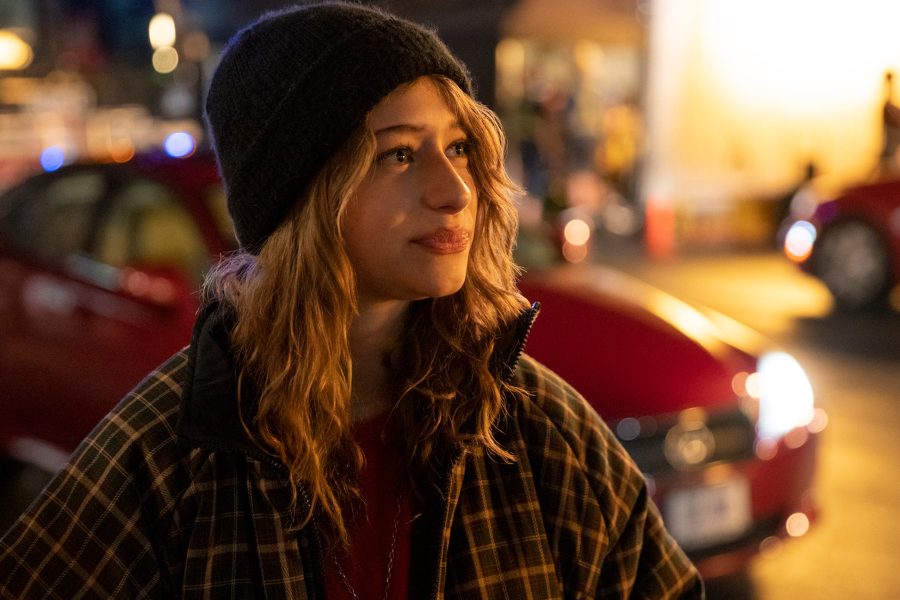Netflix original “Grand Army” attempts to make waves in show production with performative narratives including Muslim-American representation and a focus on the female experience.
Last month marked the release of several Netflix original shows, including the hit show “Grand Army.” “Grand Army” is a melting pot of four different character stories, all taking place in the heart of New York City’s high schools. While this show harbors the beginnings of creative risk with the different narratives they give a voice to, the show is still seen as an attempt from Netflix to ride the coattails of the HBO show “Euphoria.” While the main focus of the show is directed towards white feminist Joey Del Marco (Odessa A’zion), secondary character Dominique “Dom” Pierre (Odley Jean) deserves the spotlight, or more accurately, the screentime.
“Grand Army” begins its season with a myriad of avenues of plot exploration: a terrorist attack, racial injustice, sexual assault, questioning sexuality, etc. The show sheds light on many issues that are not often discussed on screen; however, these issues are not given enough attention in “Grand Army” to make a difference. The only plotline that is given the majority of screen time is Joey Del Marco and her narrative of sexual assault. Joey Del Marco is a white woman who engages with performative feminism and miscalculates racial politics with little-to-no regard for the consequences. Modeled after writer Katie Cappiello’s play “SLUT,” a play about the impact of slut-shaming and slut culture in modern society, Del Marco’s character development and narrative are given the most screen time and consideration in writing, taking away from the other plots that are arguably more interesting.
Dominique Pierre is a Haitian-American woman who undergoes many hardships in order to make opportunities for herself. She takes care of the children in her family while also managing house financials, attending school, and keeping up with her extracurriculars. Leila Kwan Zimmer (Amalia Yoo) is a Chinese adoptee who struggles between identifying with the whitewashed, slightly Jewish childhood she grew up in and her obvious ties to Chinese culture. There is an added feature of animating Zimmer’s daydreams that serves to elevate her indecisiveness with her identity and how starkly different it is to her reality. Unfortunately, the show barely uses this added feature, making the moments of animation feel thrown together and incohesive.
Lasty, Siddhartha Pakam (Amir Bageria) brings a new narrative: the Muslim-American experience after a terrorist attack. After only getting a taste of this narrative after the release of A24’s “Ramy,” it was refreshing to see an on-screen portrayal of how directly impacted Muslim-American students were after an immediate terrorist attack in their city. He also struggles with his family’s cultural boundaries and the ways in which they affected his sexuality. All of these characters, although briefly mentioned in this article, were equally only briefly mentioned in “Grand Army.” There are many interesting stories behind the secondary characters. However, if a viewer were to become distracted while watching the show, they would miss them. Cappiello misses opportunity after opportunity, maintaining the main focus on Del Marco and only touching on explosive narratives that are rarely seen in modern television.It is refreshing to have many main characters in “Grand Army” be women and have their plots focus on the female specific experience. When Cappiello writes narratives that she actually can speak on, the plots are executed well; unfortunately, the narratives that would generate the most audience traffic as well as elevate the quality of the show are narratives that Cappiello cannot speak on. A direct parallel to Joey Del Marco is Katie Cappiello in her performative plotlines and miscalculation of plot diversity. Cappiello is a white woman writing about narratives of Muslim-Americans facing racial backlash after a terrorist attack and the racial discrimination towards black students, and it is not appropriate. She does not have the firsthand experience of these narratives, and she is profiting off their uniqueness and appeal to the current political climate. The brief moments of racial injustice that are only revisited when the plot becomes less interesting shows that Cappiello might have only added those factors to make “Grand Army” relatable and palatable to the BIPOC viewers scrolling through Netflix.
Grade: C
Created By: Katie Cappiello
Starring: Oddly Jean, Odessa A’zion, Amalia Yoo
Release Date: October 16, 2020
Rated: TV-MA
Image courtesy of Rolling Stone.









Alisha • Nov 23, 2020 at 12:51 am
Siddhartha is not a Muslim American in the show, he is Indian American. Also, they were trying to say that every brown skinned person is looked in a different way because of some bunch of terrorists. Siddhartha’s fear is not because of his culture but because of his colour. Yes, Muslims face more problems than other brown skinned people but other south Asians are also targeted. And that’s what the show was trying to say.